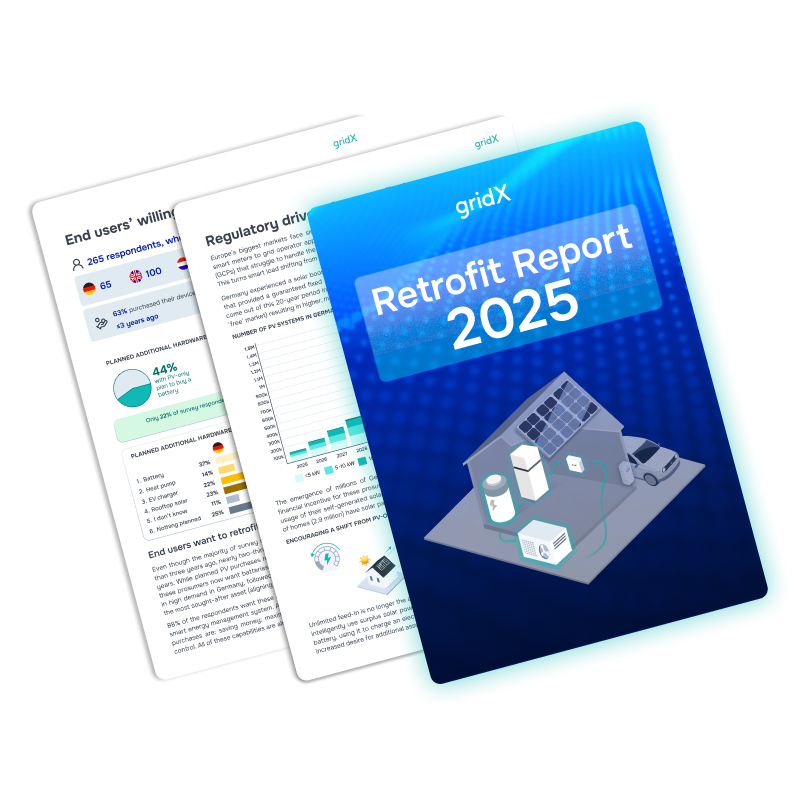When it comes to enabling the energy transition, one of the first major challenges was establishing the necessary incentives to increase capacity for renewable energy. Although this is far from over, the increasing penetration of renewable energy is now on the right path and has achieved a steady level of momentum.
In Germany, for example, the Renewable Energy Act (EEG) stipulates that photovoltaic capacity should almost double from 52GW in 2021 to 100GW by 2030. Now, the challenge has shifted to how we can best integrate this intermittent capacity into the market. According to experts in the energy industry, the answer lies in enhancing flexibility.
Energy system flexibility is the ability to adjust supply and demand to achieve a solid energy balance. Power systems must be able to modify electricity production and consumption in response to variability, whether it be expected or unexpected.
Distributed energy resources (DERs) offer great potential for flexibility. They can reduce millions of tons of carbon emissions, limit the curtailment of energy production and save money that would otherwise be spent on the development of new grid infrastructure. And IoT technology is crucial to make DERs manageable and controllable. But how can flexibility best be brought into the system? Which technologies and incentives should be chosen?
Innovating our way to a flexible energy system

To facilitate the integration of renewable energy, gridX’s Chief Growth Officer, Tim Steinmetz, revealed at our conference gridXdays that competition must foster innovation to encourage new players to emerge, and traditional players to adapt.
“We are seeing new market players like transforming oil and gas companies, who are moving from fossil fuels to the electricity business, startups, who are building themselves from scratch, hitting very specific points in the market and fighting for the end user, as well as software companies and OEMs that now provide digital energy products,” says Tim.
“The battle for serving the electricity customer of the future has begun” he continues. “In the end, it’s about who delivers the most innovative and easy to use energy product. It’s extremely important that you’re able to re-innovate and update your products over time to keep pace with this new energy era.”
There are already many innovative IoT solutions available to reduce the cost of connection and enhance the value of flexibility. Tim believes we are heading towards a future with a simple plug and play solution that has no real cost to integrate flexibilities.
One of the key levers to increasing power system flexibility is to ensure that end users are incentivized to use energy at the right time – an approach that can be best achieved with time-of-use tariffs. These tariffs ultimately enable better integration into the power grid.
"It’s extremely important that you’re able to re-innovate and update your products over time to keep pace with this new energy era."
Tim Steinmetz, CGO, gridX
A competitive yet regulated landscape
Tim notes that to complement competition we also need dynamic regulation that changes over time as grid constraints evolve.
“We need regulation to move things in the right direction and act as an accelerator towards adoption,” says Tim. “Subsidies for charging infrastructure, for example, lead to huge growth curves and push the flexible assets of the future into the market.”
At the end of June, the German Government announced new amendments and motions for resolutions to the country’s energy package. As part of this, they released a new provision that better allows electricity storage facilities and flexible consumers to bring their flexibility on the electricity market or for other system purposes, which could help to ensure that network use makes economic sense. While this can be seen as a step forward, the new regulation has also received criticism for appearing generally immature and lacking requirements on active customers.
While finding the right cocktail of fair and comprehensive regulation, healthy competition and technological innovation is no easy task, Tim is confident that with the right mindset, we can source the right flexibilities and properly integrate them into the energy market. He says, “we must find a new market design or a platform to better integrate all relevant players.”
Get in contact to find out more about how our XENON platform enhances energy system flexibility by managing and controlling DERs.



